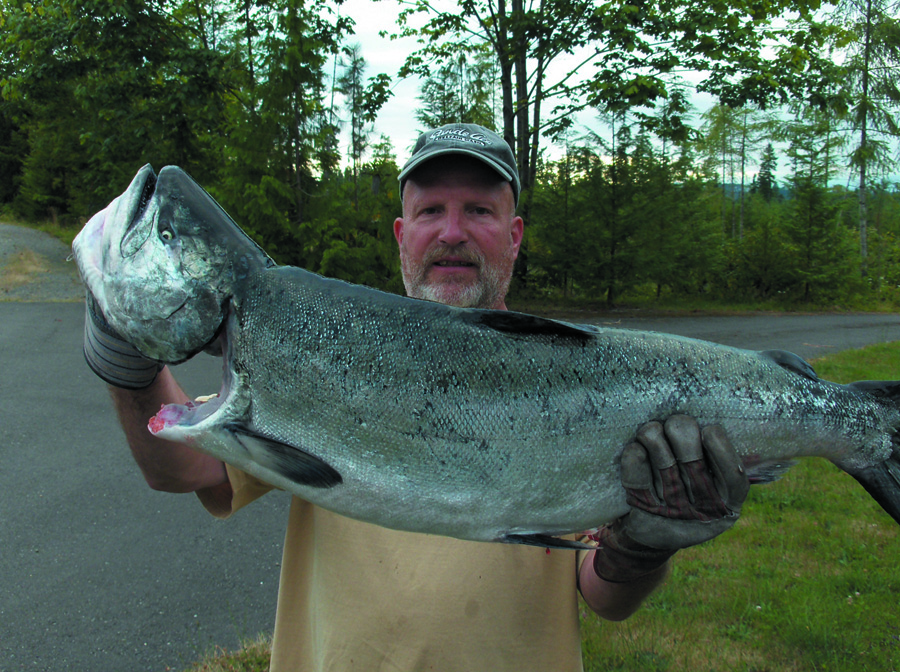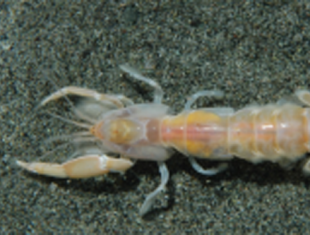Earl Sande
Two weeks ago I got a phone call from Tim Zech saying he would really like to go tuna fishing one more time before the fall weather made fishing 40 miles out in the ocean impossible. I thought about it for a few seconds and said, “Well, I’ve never fished for tuna in October before, count me in.”
I guess I never really thought much about fishing tuna in October before, but Tim said he had heard about guys catching them off the coast all the way into November. We looked at the ocean weather forecast and decided to go the very next day. Tim made a few phone calls and quickly had a four-man crew for his 24-foot Sea Sport. The tuna crew was Tim and I, and Mike Zech and Dave Daniels.
We left Belfair at 4:30 in the morning and headed to Westport in the rain. The forecast was for the small low pressure to move east by daylight. When we arrived at the coast two hours later we were welcomed with no rain or wind.
We launched the boat and cruised over to the bait dock and bought a $100 worth of live anchovies for the live tank. The Westport bar was flat calm and we headed out to sea in a southwestern direction at 25 miles per hour.
About 30 miles out we saw four sport boats that were stopped and obviously fishing for tuna with live bait. We saw tuna jumping all around us! In fact, we were seeing tuna, birds and bait for a mile in every direction! We hadn’t even made it to the blue water and the water temperature was only 57 degrees. Tuna water is usually 59 degrees and warmer.
Tim quickly put the controls in neutral and we all grabbed a pole and hooked an anchovy on the small tuna hook. As soon as the bait got 15 feet from the boat a hungry tuna would grab it and the fight was on. These 20-25 pound albacore tuna can really put up a fight, just ripping out line and sometimes taking 15 minutes to get them in the boat.
We had four on at a time more then once and by 10:00 we had 30 in the box. The bite cooled off but we were ready for a break anyway. We cleaned up the deck some and grabbed a bite to eat while pondering our next move.
We decided to go out another five miles to a spot where we had some good fishing a few years ago. We looked for birds, bait and tuna along the way, but we didn’t see any sign of them.
We got to our spot and decided to pump the bloody water out of the fish box and get the tuna iced down, then fish for a while. Maybe pumping out the fish box attracted tuna from down below because as soon as we got our bait in the water we started catching fish like crazy. Before long we had another 25 tuna in the boat!
We had used up almost all of the bait and had just enough ice to keep our tuna cold. It was truly a fabulous day on the ocean. With hardly any wind we flew back to Westport at 30 miles per hour.
Albacore tuna are perfectly designed for speed and are among the fasted and highest endurance species in the world’s oceans. They are members of the mackerel family and can reach near maximum maturity in six years. These fish are powerful ocean predators and have been clocked swimming at 60 mph. There have been disputed claims of albacore swimming up to 73 mph for short bursts.
These high-performance fish require a lot of fuel and spend most of their life looking for food in the open ocean. Tagging studies have shown that they can travel more then 5,000 miles in less then a year, from California to Japan. Albacore are found in all the world’s warm oceans, but appear to be more abundant in the Pacific
. Being one of the fasted fish in the sea, they have few predators, marlin and Wahoo have been known to feed on albacore.
They are one of the smallest tuna species with an average weight of around 20 pounds, but can grow much larger. The all-tackle record is 88 pounds taken near the Canary Islands.
Albacore are fast growing and seldom live beyond 12 years. By one year they can weigh over two pounds and be 18 inches long. At three years they can be 14 pounds; at four 22 pounds; at five 30 pounds; at six 40 pounds; at seven 46 pounds; at eight 54 pounds; at nine 60 pounds; and at twelve 85 pounds.
Apparently after age six they rarely come to the surface to feed except maybe at night. That’s OK because a 20-pounder has a lot less mercury in it anyway! And I don’t know if I’m tough enough to reel in an 85 pounder!
North Pacific albacore are considered to be a single spawning stock. Most spawning happens from March though August in the subtropical Pacific Ocean somewhere between Mexico and the Philippines.
A female albacore over four years old will spawn from 1,000,000 to 3,000,000 eggs that will float near the surface until they hatch. The juvenile tuna will remain in the area until their second year. That spring they begin their northern migration up the North American coast.
Albacore never swim in really tight schools. That’s why most commercially caught albacore are not caught by purse seiners. Fishermen must catch them one-by-one with troll, longline, or pole and line gear.
Albacore tuna are one of the wonders of the world. They are a blast to catch. It’s a big ocean and you don’t always find them but when you do it can be a day you’ll never forget!



